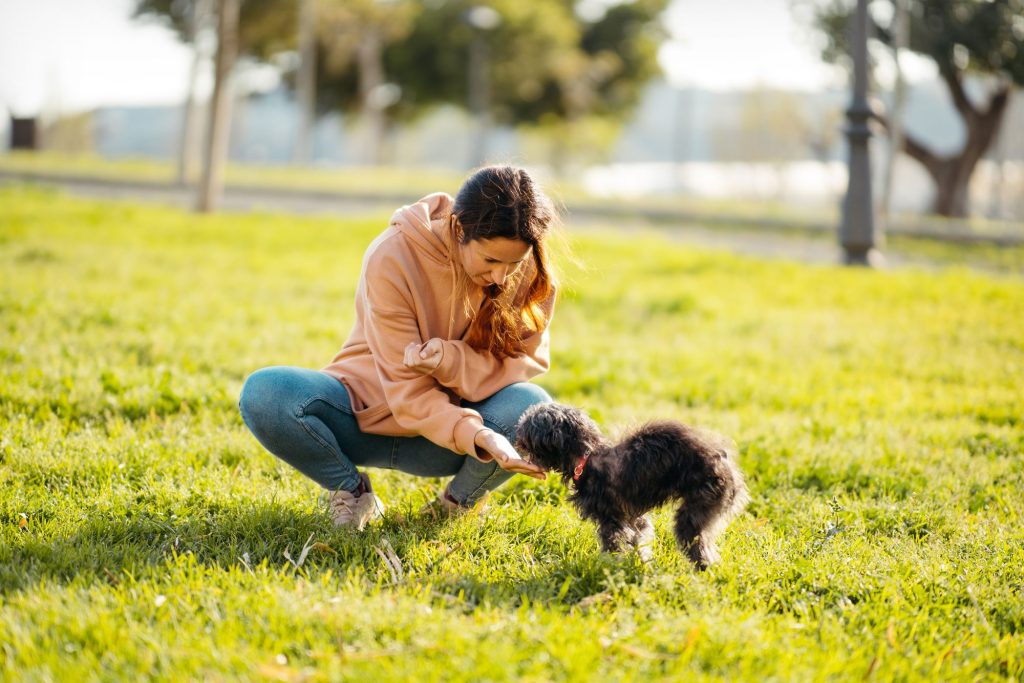Boost Pet Socialization Tips for Parks and Public Spaces

Enhancing Your Pet’s Experience in Public Spaces
Taking your pet to parks and public spaces not only allows for exercise but also serves as an important opportunity for socialization. Exposure to different sights, sounds, and other animals can help your furry friend develop confidence and adaptability. While many pet owners recognize the value of these outings, some may be uncertain about how to maximize the benefits for their pets. With the right approach, you can ensure that these adventures are enriching for both you and your beloved companion.
Significant Benefits of Pet Socialization
Engaging your pet in varied environments brings about numerous advantages that can positively impact their overall behavior and wellbeing. Here are a few vital benefits of effective pet socialization:
- Improved behavior in new environments: Socialized pets are typically more well-mannered and can adjust more easily to unfamiliar situations. For instance, a dog accustomed to seeing other dogs at the park is less likely to react negatively when meeting new canine friends.
- Reduced anxiety during outings: Pets that have been socialized are less likely to experience stress or fear in crowded or bustling areas. Regular exposure can make them feel more secure and comfortable, turning potential nerve-wracking experiences into enjoyable adventures.
- Healthy companionship with other animals: Socialization helps pets develop positive relationships with both humans and fellow animals, fostering a sense of community and friendliness. This is particularly important for growing pets, as it allows them to learn how to communicate appropriately with their peers.
Facilitating Interactions: Key Aspects to Explore
As dedicated pet parents, it is essential to enhance interactions involving your pets. Here are some key aspects to consider when venturing into social settings:
- Recognizing your pet’s body language and comfort level: Pay attention to their posture, facial expressions, and overall demeanor. Signs of nervousness, such as tail tucking or backing away, indicate a need for more space or a slower introduction. Being mindful of these cues will allow you to support them better.
- Introducing gradual encounters with other pets: Start small by exposing your pet to one or two animals before trying larger groups. For example, you might consider arranging playdates with friends’ pets before heading to a busy dog park, where the energy can be overwhelming.
- Utilizing positive reinforcement techniques: Reward desirable behaviors to encourage your pet to associate these outings with positive experiences. Using treats or praise for calmness or friendly behavior can reinforce these good interactions.
By implementing these strategies, pet owners can create ample opportunities for their pets to thrive in social situations. In doing so, visits to parks and public spaces can transform into rewarding experiences that nurture your pet’s social skills, build confidence, and strengthen the bond between you and your furry friend. So, get ready to explore, interact, and enjoy the beautiful journey of pet socialization! Dive into practical tips and best practices that await your discovery and ensure each outing is a wonderful adventure for both of you.

CHECK OUT: Click here to explore more
Understanding Your Pet’s Needs in Social Settings
Before diving into the various strategies and tips for enhancing your pet’s socialization, it’s crucial to first understand their individual needs. Every pet is unique and may respond differently to new experiences. Recognizing these differences can be the key to successful socialization in parks and public spaces. Pet owners must become keen observers of their animals’ reactions and preferences, facilitating a smoother integration into social settings.
Assessing Your Pet’s Readiness for Socialization
To ensure your pet thrives in social environments, begin by assessing their readiness for interaction, which can be influenced by factors such as breed, age, and past experiences. Here are a few considerations to bear in mind:
- Age and development: Puppies benefit from early socialization to develop their behavior patterns, while older dogs may have established habits that could be more challenging to change. Exposing young pets to diverse experiences within the critical socialization window (typically between 3 to 14 weeks) is vital. Conversely, senior pets might require a different approach that respects their maturity and comfort levels.
- Temperament and personality: Each pet has a distinct personality that shapes their social behavior. For example, some dogs are naturally boisterous, while others are more reserved. Understanding whether your pet is an introvert or an extrovert can guide your approach to interactions. Acknowledging their temperament will help you make informed decisions about where and when to socialize your furry friend.
- Previous experiences: Consider any past events that might have impacted your pet’s demeanor. For instance, a dog that faced a traumatic encounter at a park may need extra time and support. Patience is essential when preparing such pets for future outings, ensuring that you create a safe and positive environment.
Once you have a better understanding of your pet’s baseline behavior and comfort zone, the next step is to create a structured plan for socialization. A gradual approach can prove immensely beneficial, preventing overwhelming experiences that may lead to anxiety or fear.
Creating a Positive Environment for Socialization
To foster a positive experience, it’s vital to choose the right location and time for outings. Public parks vary significantly in activity levels, and finding ones that match your pet’s energy can make all the difference. Below are some tips for selecting an appropriate setting:
- Timing matters: Visit parks during less crowded hours, such as early mornings or weekdays, to provide an easier introduction to the environment. With fewer distractions, your pet can focus on slowly acclimating while you facilitate interactions.
- Choose dog-friendly spaces: Look for parks with designated dog areas or pet-friendly zones, which are usually more accommodating and safer for pet interactions. These sections often provide a more controlled environment, allowing your pet to meet others in a more relaxed manner.
- Set boundaries: Being proactive about your pet’s social limits is essential. Know when to step in and create some distance if interactions become overwhelming. This respects your pet’s comfort and ensures that they have a positive experience.
By concentrating on these foundational aspects of pet socialization, you can create opportunities that empower your furry friend to thrive in public spaces. Adopting a thoughtful approach can lead not only to improved social skills but also to unforgettable adventures in parks and beyond. Stay tuned for more insightful tips on maximizing those outings and enriching your pet’s life through effective socialization.
| Benefits of Socialization | Key Socialization Strategies |
|---|---|
| Improved Behavior | Regular exposure to different environments and other pets reduces anxiety. |
| Enhanced Confidence | Gradual introductions help pets develop trust and feel secure in public spaces. |
| Strengthened Bond with Owner | Participating in activities together fosters a strong connection between pets and their owners. |
| Better Health | Socialized pets tend to enjoy outdoor activities, promoting a healthier lifestyle. |
Incorporating socialization practices for your pet while visiting parks or public spaces is essential for their development. For instance, taking your dog to a dog park encourages playtime, which is crucial for emotional and physical well-being. Additionally, organizing meetups with other pet owners can facilitate enjoyable experiences, making social interactions less stressful. Routine exposure to various breeds and temperaments not only enhances your pet’s adaptability but also enriches their social skills, paving the way for more relaxed outings. Remember, the more social your pet becomes, the easier it is for them to navigate the world around them confidently. This positive exposure enables them to form lasting relationships with both humans and other animals, proving invaluable during their developmental years.
SEE ALSO: Click here to read another article
Engaging Activities to Enhance Socialization
Once you’ve assessed your pet’s readiness and chosen the right location for outings, it’s time to implement engaging activities that will help boost socialization. Incorporating fun and interactive exercises can create memorable experiences and build your pet’s confidence in social settings.
Interactive Games and Training Techniques
Promoting social skills through games and training not only benefits your pet’s interactions but also strengthens the bond between you and your furry friend. Here are a few ideas that can easily be adapted for parks and public spaces:
- Fetch and Retrieve: Playing fetch with a favorite toy or ball is a fantastic way to encourage social interaction. As your pet chases after the object, they’ll meet other pets and humans alike. This activity helps them learn to engage confidently with their environment while providing an outlet for their energy.
- Training Classes: Consider enrolling your pet in group training classes, which can serve as a structured introduction for them to socialize with their peers. Positive reinforcement techniques used in these settings not only teach essential commands but also enhance your pet’s ability to interact with others respectfully.
- Obstacle Course:**: Set up a simple obstacle course with items like cones, tunnels, and jumps that can be found in many dog parks. Techniques like navigating through obstacles can help your pet focus on exciting challenges, while simultaneously acclimating them to being around distractions, whether other dogs or curious onlookers.
Utilizing Positive Reinforcement
Using positive reinforcement is extremely effective in enhancing social behavior. The goal is to reward your pet with treats, praise, or playtime when they display desirable social behaviors. Here are a few strategies to keep in mind:
- Reward Calm Behavior: When your pet remains calm and composed while interacting with other pets or humans, be sure to give them a treat or verbal praise. This reinforces their positive behavior and encourages them to repeat it in the future.
- Gradual Exposure: Slowly introduce your pet to various stimuli, such as different breeds or sizes of dogs, while rewarding their good behavior. This helps build a strong foundation for social skills by creating distinct associations with new experiences that are positive in nature.
- Social Treats: Carry treats to reward not just your pet but also others you encounter. When your pet interacts well with another dog or human, both pets can receive a treat. This simple act reinforces positive interactions in a fun, communal way.
Observing and Learning from Others
One of the best ways to enhance your pet’s social skills is to observe other pets in action. By watching how well-behaved pets navigate their environment, your pet can learn appropriate manners and boundaries. Here are a few tips on how to effectively observe and learn:
- Attend Local Dog Meetups: More cities are hosting pet-friendly meetups, which allow dogs to mingle. Observing how other pets interact can provide valuable insights for pet owners and give their own pets inspiration on how to engage.
- Seek Out Friendly Companions: If you notice another pet that seems well-socialized, approach their owner about possible playdates. Setting up controlled interactions with experienced pets can help your furry friend learn the ropes in a safe environment.
- Collaborate with Fellow Dog Owners: Join local online forums or social media groups for dog owners in your area. Sharing tips and experiences among fellow pet enthusiasts can lead to enhanced socialization opportunities for your pet.
By incorporating these engaging activities and strategies, you empower your pet to grow more comfortable in social settings while creating fun experiences in parks and public spaces. As your pet develops their social skills, you can anticipate exciting adventures and deeper connections, both with your furry friend and fellow pet lovers in the community.
SEE ALSO: Click here to read another article
Final Thoughts on Boosting Pet Socialization
In conclusion, enhancing your pet’s socialization skills while enjoying parks and public spaces can lead to a fulfilling experience for both you and your furry friend. The journey of socialization begins with understanding your pet’s comfort level and gradually introducing them to various stimuli. Engaging activities such as fetch, obstacle courses, and group training not only foster interaction but also solidify the bond you share with your pet.
Utilizing positive reinforcement techniques is crucial in this process; rewarding calm behavior and introducing pets to new environments progressively can enable them to flourish in social settings. Additionally, observing other well-behaved pets can offer invaluable learning experiences, paving the way for better interactions in the future. Utilizing local resources like dog meetups and online communities can further enhance the socialization opportunities available to your pet.
Ultimately, the benefits of socialization extend beyond mere interaction—they contribute to your pet’s overall well-being, reducing anxiety and enhancing their quality of life. As you continue to explore the delightful outdoor spaces around you, remember that patience and persistence are key. With each outing, your pet will become more adept at navigating the social landscape, leading to exciting adventures and deepening connections within the pet-loving community. Embrace the journey of socialization, and watch your furry companion thrive in the vibrant world of parks and public spaces.



